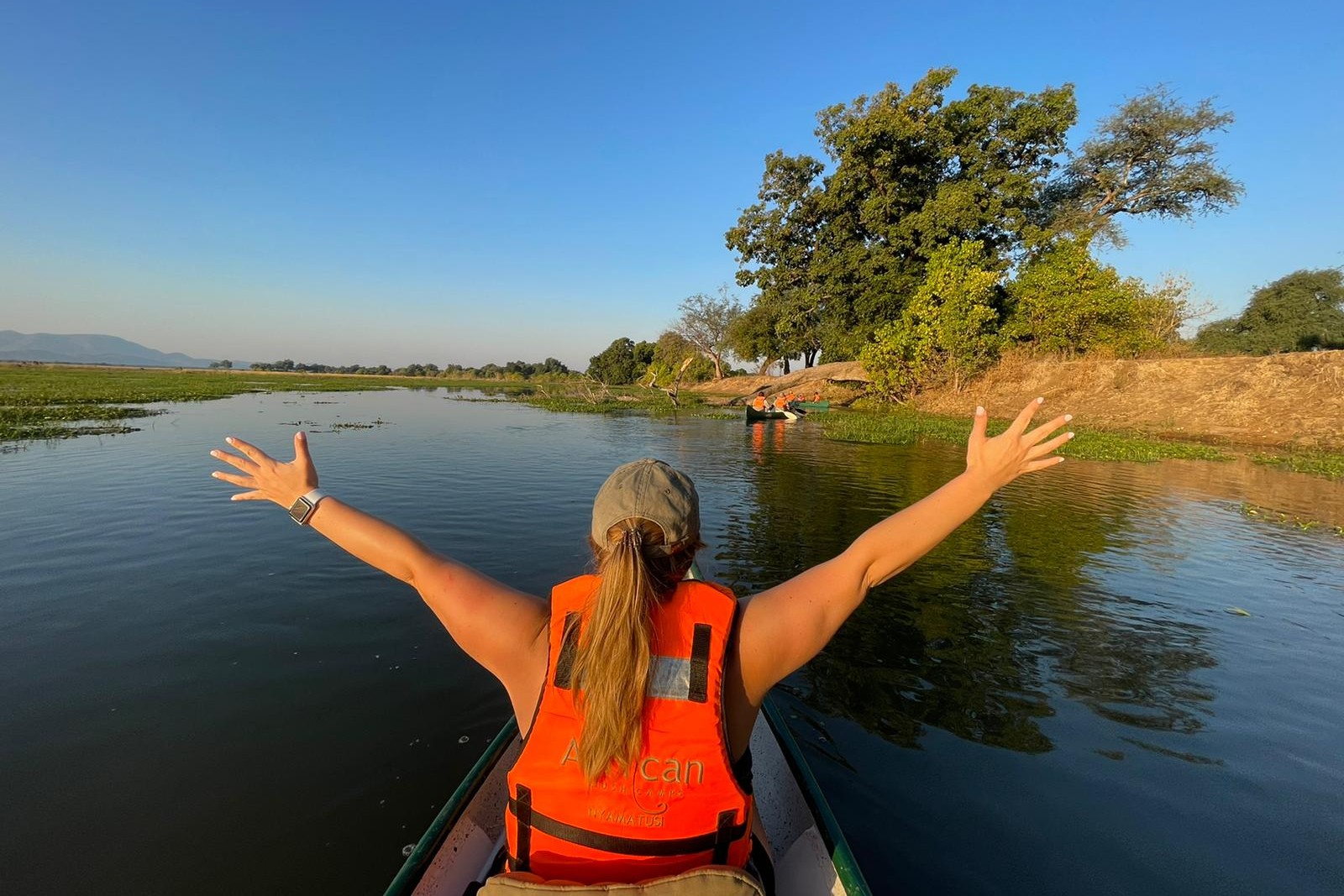
There are a lot of ways to compare safaris in Southern and East Africa, and you’ll likely get a slightly different answer from every expert you talk to. When I talk to my clients about the differences, I usually break it down into three main areas:
- Cultural Experiences
- Possible Safari Trip Extensions
- Accommodation Style & Amenities
These are general guidelines, and there are definitely exceptions, but focusing on these three areas is a helpful starting point for anyone trying to decide which region they would like to visit for their safari.

For the purposes of this comparison, when referencing safari in East Africa, I generally am referring to Kenya and Tanzania. In Southern Africa, I generally am referring to South Africa, Botswana, Zambia and Zimbabwe.
Cultural Experiences
When it comes to cultural experiences, I often describe East Africa as feeling more culturally forward compared to Southern Africa.
In countries like Kenya and Tanzania, it’s common to see people wearing traditional Maasai clothing, including the red shuka cloths, beaded necklaces, and decorative headpieces. Traditional clothing and beads are often brightly colored and culturally significant. Travelers often find themselves naturally encountering these traditions and have the opportunity to ask questions and learn about local customs that may feel very different from what they’re used to.

In rural parts of East Africa, many people still live in traditional huts made from mud, grass, sticks, and animal dung. These circular, thatched-roof homes are the same kinds you may have seen in photos, and they are still widely used outside of major cities. Some communities also live semi-nomadic lifestyles, moving with their livestock to find better grazing areas. It’s not unusual for a guide or camp staff member to count their wealth by the number of cattle they have rather than dollars in a bank account.
Southern Africa offers a different experience. It’s less common to see traditional clothing worn in everyday life. People tend to wear more modern clothes, and safari staff are often dressed in what we affectionately call “safari khaki” or their camp uniforms. If you do see traditional attire, it’s typically part of a presentation or cultural activity created for visitors. The region’s long history of colonization, especially in places like Cape Town, has led to a greater degree of westernization that’s shaped both cultural and societal norms.

Every country you visit will offer something different, but the way you encounter those cultural elements can vary a lot depending on where you are.
Possible Safari Trip Extensions
In my experience, trips to East Africa tend to focus primarily on safari, with maybe a night or two in Nairobi at the beginning. For travelers who have a bit more time, there are some great add-ons to consider, including:
- A beach escape to Zanzibar, the Seychelles, or the Kenyan Coast
- A culturally focused stay that offers time in a local community, such as attending a ceremony, beading with local women, joining in traditional song and dance, or visiting a village
- A primate experience like gorilla or chimp trekking

In Southern Africa, it’s much more common to include at least one experience that isn’t centered around wildlife. Some popular additions include:
- A few days in Cape Town or the Cape Winelands, with a focus on food, wine, history, or active adventure
- A desert-focused extension to Namibia, which could easily be its own trip!
- A beach add-on such as Mozambique
- A visit to Victoria Falls, where the main attraction is the falls themselves, although there are plenty of animals to see in and around the Zambezi River

Overall, Southern Africa tends to offer a wider variety of non-safari extensions, while East Africa is often more singularly focused on the safari and wildlife component.
Accommodation Style & Amenities
In both Southern and East Africa, you’ll find a wide range of accommodations, including tented camps, lodges, thatched-roof rooms, mobile camps, and ultra-luxury properties. As a broad generalization, accommodations in Southern Africa, particularly in South Africa, tend to be more permanent and robust than those in East Africa. There are plenty of exceptions, but for someone going on safari for the first time, Southern Africa can sometimes feel more familiar. The structures often resemble accommodations that you might see elsewhere in the world, and less like a tent.
Amenities like private decks, plunge pools, air conditioning, hair dryers, and even camp gyms are often easier to come by in Southern Africa. These comforts are available in East Africa too, but they may be less common depending on where you’re staying.

Ultimately, both regions offer a full range of options from rustic to luxurious. For many travelers, the biggest difference comes down to the perception of comfort rather than the actual availability of amenities.
